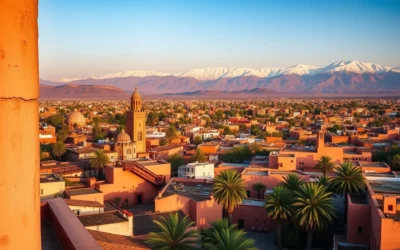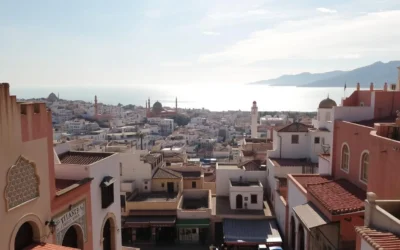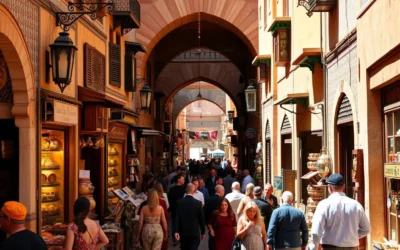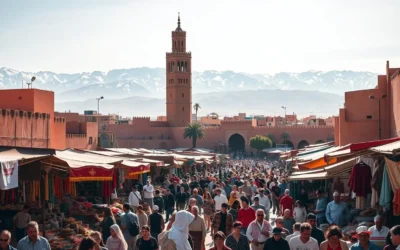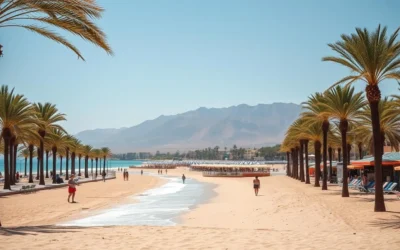✓ Accommodations ✓ Flights ✓ Rental Cars
Discover the enchanting capital city of Morocco, where history meets modern charm. As you plan your trip, you’ll find that Rabat offers a unique blend of historical sites, cultural experiences, and coastal beauty, making it an ideal destination for travelers seeking an authentic experience.
Unlike the bustling streets of Marrakech or the labyrinthine lanes of Fez, Rabat provides a more relaxed atmosphere, allowing you to truly immerse yourself in the local culture. As a UNESCO World Heritage Site, Rabat boasts attractions dating back to the 12th century, including a stunning kasbah overlooking the Atlantic coast.
Whether you’re visiting for a day or staying longer, this comprehensive guide will help you uncover the city’s hidden gems, from ancient ruins to modern art museums and coastal experiences. With new luxury hotels opening, including a Four Seasons and Ritz-Carlton, now is the perfect time to visit Rabat and experience all it has to offer.
Discovering Rabat: Morocco’s Captivating Capital
Discover the captivating city of Rabat, where history meets modernity in a laid-back atmosphere. As you plan your trip to this enchanting capital, you’ll find that Rabat offers a perfect balance of historical charm and modern amenities, making it an ideal destination for visitors from around the world.
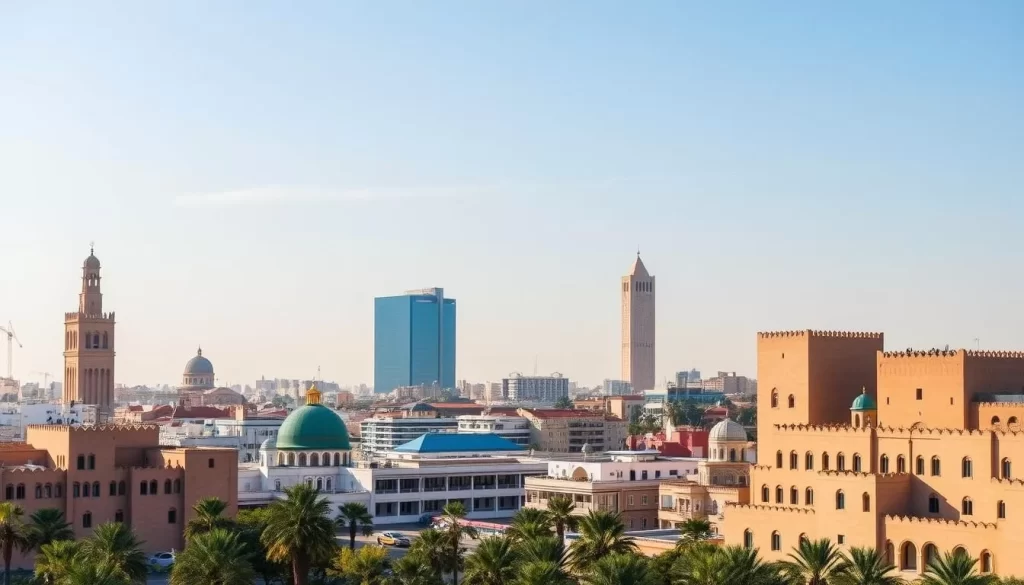
When to Visit Rabat
The best times to visit Rabat are during the spring (April-May) and fall (September-October), when the temperatures are pleasant and there are fewer tourists. Summer brings the famous Mawazine music festival, typically in June, attracting international artists and making it one of the world’s largest music festivals.
Getting Around the City
Rabat is easily navigable thanks to its efficient tram system, which connects major attractions. You can also use affordable taxis or walk through the central areas. To explore neighboring Salé, small boats ferry passengers across the Bou Regreg River. For trips to other Moroccan cities, high-speed trains from Casablanca and Tangier make Rabat easily accessible.
The city is developing, with new luxury hotels and cultural venues enhancing Rabat’s appeal as a destination. A new Four Seasons hotel is set to open, housed in a former royal residence, and a Ritz-Carlton hotel is also on the way, surrounded by 440 acres of oak forests. The long-awaited Grand Theatre of Rabat and the Mohammed VI Tower are expected to further enrich the city‘s cultural and architectural landscape, offering many things to see and do in this vibrant place.
Explore Rabat’s Historical Treasures
As you wander through Rabat, Morocco’s captivating capital, you’ll discover a treasure trove of historical sites that showcase the city’s rich past.
Rabat is home to numerous historical landmarks that highlight its significance as a cultural and historical hub. From ancient Roman ruins to Islamic monuments, the city offers a unique glimpse into its diverse heritage.
Hassan Tower and Mohammed V Mausoleum
The Hassan Tower and Mohammed V Mausoleum are two of Rabat’s most significant historical sites, situated at one of the highest points in the city. The 12th-century Hassan Tower, an incomplete minaret intended to be the world’s tallest, stands at 44 meters, still an imposing sight. The adjacent Mohammed V Mausoleum, with its stunning white marble exterior and red-uniformed royal guards, contains the tombs of the Moroccan king Mohammed V and his two sons.
The mausoleum is notable for its beautiful interior, featuring intricate zellij mosaics and a gold-leaf ceiling. Unlike many religious sites in Morocco, the mausoleum welcomes non-Muslim visitors, making it an accessible cultural experience.
Chellah: Ancient Roman Ruins
Chellah is a fascinating archaeological site that contains layers of history, from Phoenician origins through Roman occupation to Islamic development. The site is now home to impressive ruins and nesting storks, creating a unique atmosphere.
The overgrown plants intertwined with maintained gardens at Chellah provide a captivating setting for exploring ancient history.
The Royal Palace
The Royal Palace (Dar al-Makhzen) is the official residence of Morocco’s king, noted for its impressive exterior architecture and ceremonial guards. Although visitors cannot enter the grounds, the palace’s grandeur is still visible from the outside.
Wander Through Rabat’s Enchanting Neighborhoods
As you explore Rabat, you’ll discover a tapestry of unique neighborhoods, each with its own distinct atmosphere and charm. From the historic Kasbah des Oudayas to the bustling Old Medina and the serene Andalusian Gardens, Rabat’s diverse neighborhoods offer a rich and immersive experience.
Kasbah des Oudayas: The Blue and White Citadel
The Kasbah des Oudayas is a picturesque citadel perched dramatically above the Atlantic Ocean and Bou Regreg River. Entered through the impressive 12th-century gate, Bab Oudaia, this historic neighborhood is characterized by its narrow, winding alleys and blue and white walls, creating a mini “blue city” experience. The kasbah offers spectacular viewpoints with panoramic vistas of the ocean, river, and neighboring Salé, making it a perfect spot for photography.
Old Medina: Shopping and Local Life
In contrast to the kasbah’s tranquility, the Old Medina of Rabat presents a more relaxed and navigable shopping experience. With wider streets and less aggressive vendors compared to other Moroccan cities, visitors can enjoy browsing traditional crafts like Rabati rugs and local food stalls, immersing themselves in authentic daily life within the Rabat Medina.
Andalusian Gardens
Adjacent to the kasbah, the tranquil Andalusian Gardens offer a serene escape. Created during the French protectorate period, these gardens feature lush palm trees, orange groves, and formal landscaping. Visitors can enjoy traditional Moroccan mint tea and pastries at Café Maure (Café des Oudayas) while taking in the views of the river, making it a perfect spot to relax.
By walking through these neighborhoods, you can experience the contrast between the peaceful kasbah, the commercial medina, and the refined gardens, gaining a deeper understanding of Rabat’s unique cultural and historical landscape.
Rabat, Morocco: Best Things to Do for Art and Culture Lovers
As an emerging arts destination, Rabat is a must-visit for culture lovers. The city offers a diverse range of cultural experiences, from world-class museums to international music festivals and vibrant street art.
Mohamed VI Museum of Modern and Contemporary Art
The Mohamed VI Museum of Modern and Contemporary Art, opened in 2014, is Morocco’s first major institution dedicated to modern art. Housed in a stunning contemporary building, it showcases over 200 works by Moroccan artists alongside international exhibitions, providing a unique insight into Morocco’s contemporary cultural scene. The museum’s rotating exhibits have featured renowned artists like Picasso and Goya, making it a must-visit spot for art enthusiasts.
National Photography Museum
Located in the historic Borj El Kebir fort, the National Photography Museum offers a dramatic venue for contemporary photography exhibitions. The museum provides insights into Moroccan society through the lens of local photographers, making it a compelling destination for art lovers and those interested in cultural storytelling.
Experience the Mawazine Music Festival
The annual Mawazine Music Festival, also known as “Rhythms of the World,” is one of the world’s largest music festivals, attracting international superstars and offering 90% free concerts across multiple venues. This festival is a testament to Rabat’s vibrant cultural landscape, making it an unforgettable experience for visitors.
Combining these cultural institutions and events, you can create a comprehensive itinerary for a day that explores Rabat’s vibrant arts scene, from traditional to contemporary expressions. This not only highlights the city’s rich cultural heritage but also showcases how Rabat is evolving as a destination that goes beyond traditional crafts and historical sites, appealing to a wide range of cultural interests.
Coastal Experiences and Natural Beauty
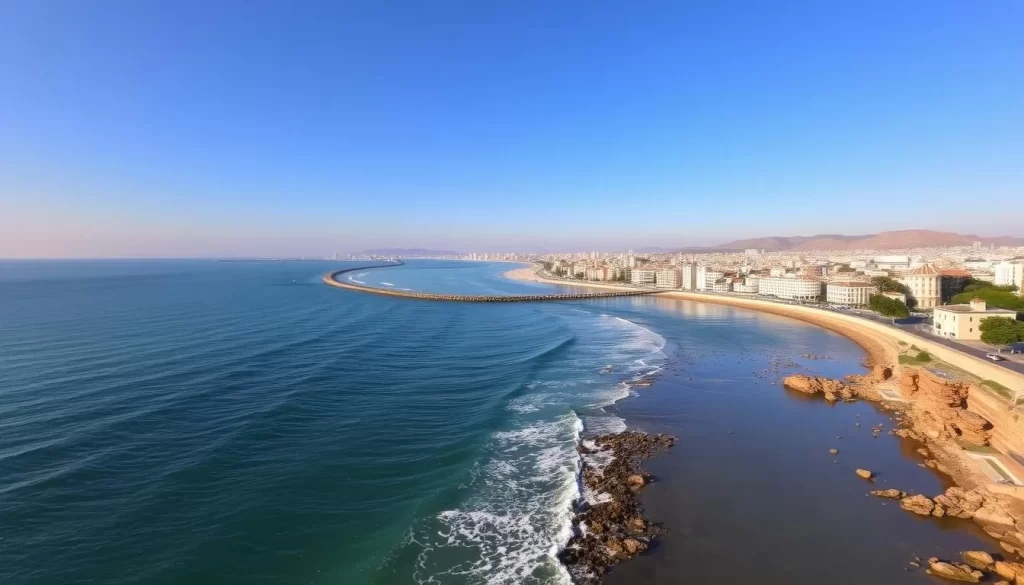
The city’s location where the Atlantic Ocean meets the Bou Regreg River creates diverse coastal experiences for you. As you explore Rabat, you’ll discover a mix of beach activities, river tours, and scenic views.
Rabat’s Atlantic Beaches
Rabat’s Atlantic beaches, such as Temara and Skirat, offer you a range of experiences. If you’re looking for challenging waves, head to Plage des Nations, a favorite among surfers. The beaches are more vibrant during the summer months (June-September) when the water is warm, and the sand is well-maintained. For water sports enthusiasts, nearby Kenitra is a notable surfing hotspot worth visiting.
Bou Regreg River Experiences
Along the Bou Regreg River, you can enjoy various recreational activities. Take a boat tour to view the Kasbah des Oudayas and Salé from the water, offering unique views. You can also dine at Le Dhow, a distinctive boat-restaurant anchored on the river, perfect for enjoying meals with panoramic views or evening entertainment. The Marina Bouregreg development has transformed the riverfront with walking paths, cafes, and recreational spaces. For a traditional experience, use the small wooden rowboats (barcas) that ferry passengers across the river between Rabat and Salé.
Visiting these coastal areas during sunset is highly recommended, as the Atlantic Ocean and Bou Regreg River are bathed in golden light, creating spectacular photo opportunities.
Culinary Delights and Dining Experiences
As you explore Rabat, you’ll discover a delightful mix of traditional Moroccan cuisine and international flavors, with dining venues ranging from historic cafés to modern restaurants. The city’s culinary scene is a reflection of its rich cultural heritage, offering a unique gastronomic experience.
Traditional Moroccan Cuisine in Rabat
Rabat is a haven for food lovers, with traditional Moroccan dishes like tajines, couscous, and pastilla being must-try experiences. The city’s coastal location also means that fresh seafood is a staple in many local eateries. You can sample home-style Moroccan food at authentic local eateries in the medina, where locals line up for fish sandwiches and other street food.
Le Dhow: Dining on a Boat
For a unique dining experience, head to Le Dhow, a boat moored on the Bou Regreg River that serves as a restaurant, bar, and entertainment venue. Enjoy spectacular views of the river while savoring local cuisine. It’s a great spot to relax and enjoy the evening atmosphere.
Café des Oudayas: Mint Tea with a View
Nestled within the kasbah walls, Café des Oudayas (also known as Café Maure) is a historic café that offers traditional Mint tea and Moroccan pastries with panoramic views over the water. The café’s setting among orange trees and flowering plants creates a tranquil atmosphere that has remained unchanged for centuries. It’s a perfect place to unwind and enjoy the local life during the day.
Dining in Rabat offers a more relaxed way to experience Moroccan food culture, with authentic interactions and reasonable prices. You can also engage in food-related activities like cooking classes or guided food tours through the medina to further enrich your culinary experience.
Conclusion: Making the Most of Your Visit to Rabat
With its rich history, vibrant culture, and stunning coastal views, Rabat is a destination that has something for everyone. As you visit Rabat, you’ll discover a city that offers a perfect blend of historical depth, cultural richness, and coastal beauty without the overwhelming tourism of other Moroccan cities.
To make the most of your trip, consider exploring beyond the main attractions. Rabat rewards visitors who take the time to discover hidden gems in the kasbah, medina, and along the Bou Regreg River. For a comprehensive experience, prioritize the Hassan Tower and Mohammed V Mausoleum early in the morning to avoid crowds, and enjoy the Kasbah des Oudayas at sunset for spectacular views over the Atlantic Ocean.
Practical tips can enhance your visit Rabat experience. Hiring local guides can provide deeper historical context, while using the efficient tram system can save you time. Consider visiting during the Mawazine Festival in June or in spring when the Andalusian Gardens are in full bloom. With its authentic way to experience Moroccan culture and history, Rabat is a place that offers a genuine connection to the world beyond tourism.
As Rabat continues to evolve with new cultural institutions and luxury accommodations, it invites you to discover its growing appeal on the world stage. Whether you have just one day or a few, Rabat is a city that will leave you with lasting memories, making it a worthwhile trip for any traveler.
The above is subject to change.
Check back often to TRAVEL.COM for the latest travel tips and deals.

